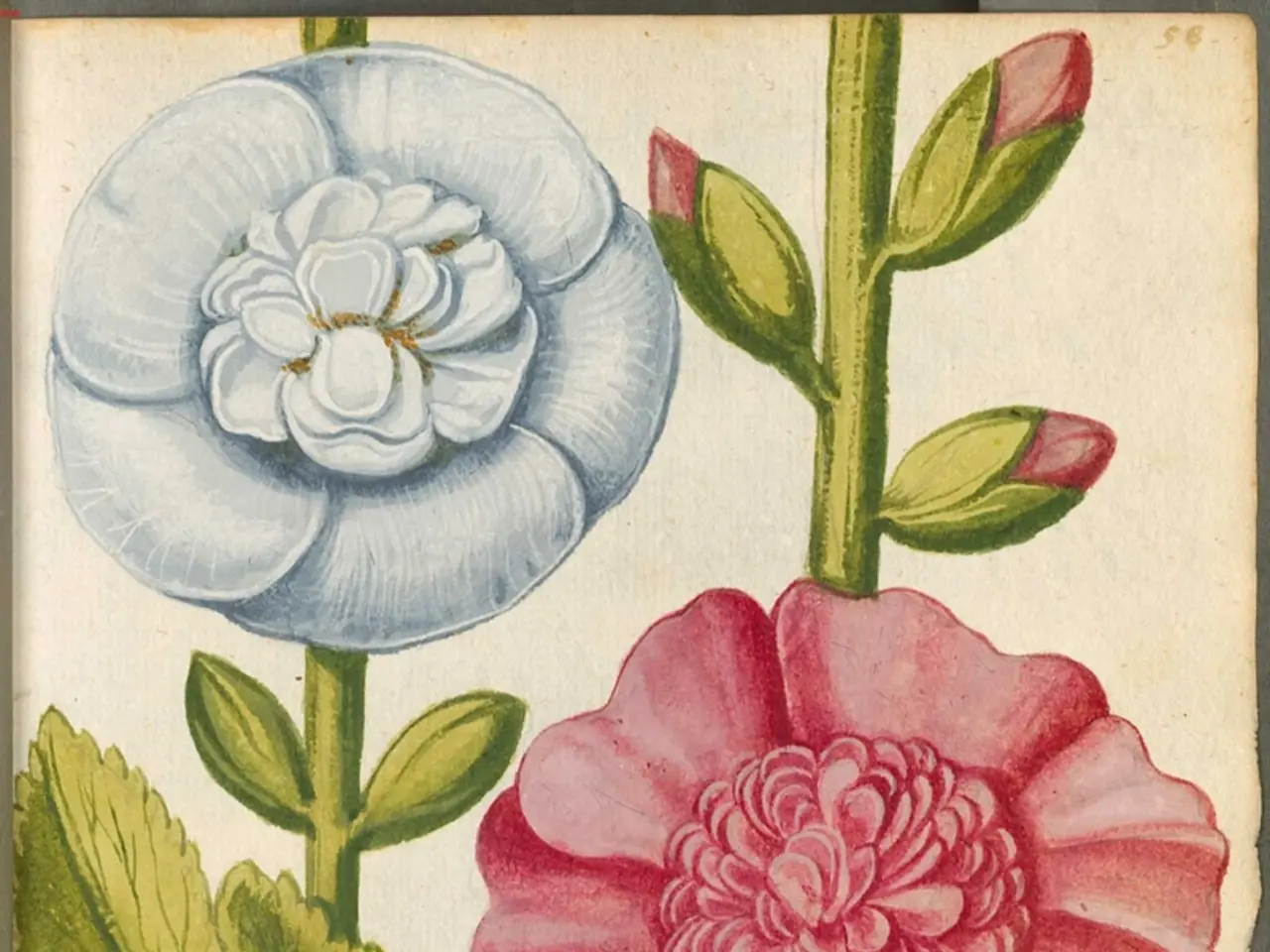Ignite Your Creative Spirit: Simplified Watercolor Techniques for Artistic Newcomers
Getting Started with Watercolor: A Guide for Beginners
Watercolor painting is a beautiful and expressive art form that allows artists to create stunning works of art using simple tools and a variety of techniques. For those just starting out, here's a guide to help you get started on your watercolor journey.
Essential Tools for Beginners
To kick off your watercolor adventure, you'll need a few essential tools. A basic watercolor paint set, preferably with a good range of colors, is the first step. Brands like Winsor & Newton Cotman, Daniel Smith Introductory Set, and Sakura Koi are recommended for their good pigment quality and ease of use.
Alongside your paints, you'll need a palette for mixing, several round brushes in different sizes, watercolor paper designed to handle water well, a water container for rinsing brushes, and paper towels or sponges for blotting. A simple pencil is also needed for sketching out designs before painting.
Basic Watercolor Techniques
Once you have your tools, it's time to learn some basic techniques. The 'wet-on-wet' technique involves applying wet paint onto wet paper to create soft, blended effects. Conversely, the 'wet-on-dry' method offers more control and is used to add sharper details and texture. Blending two colors involves starting with one color, then adding a second into the wet first color and brushing together to blend smoothly. Graduated washes help create smooth gradations from dark to light.
Simple Painting Ideas
Starting out, it's best to keep things simple. Basic shapes like leaves, fruit, or flowers can help you practice washes and blended colors. Simple landscape elements such as skies and hills provide opportunities to explore gradients and mixing. Abstract color studies focusing on blending and layering colors can also be a great starting point.
Tips for Color Use and Keeping Creativity Flowing
Using a limited palette at first can help you learn color mixing and avoid feeling overwhelmed. Experimenting with blending colors wet-on-wet can lead to discovering unexpected hues. Keeping a color wheel handy can help you understand complementary and analogous colors, which enhance painting compositions.
Regular practice without pressure is key to developing your skills. A watercolor journal or sketchbook can help maintain a relaxed, exploratory mindset. Experimenting with different brushes and adding simple textures can keep your interest high. Watching beginner-friendly tutorials and following a progressive course can help you build skills methodically.
Exploring Nature's Beauty
Painting nature, such as flowers and trees, offers a vast range of colors and shapes to explore. Fruits and plants are great for practicing shadows and shapes. Landscapes and skyscapes provide opportunities to explore color gradients. Paying close attention to the direction of light and how it influences the hues and saturation in a painting is important.
Mastering the Basics
Mastering the 'wet-on-wet' technique can help you achieve soft, diffuse effects and subtle color blending. Starting with basic line drawings to outline the eyes, nose, and mouth can help you bring characters to life. Understanding shadows improves facial depiction.
Tips for Success
Practicing color gradients will improve your technique and enhance the emotional impact of landscapes or skyscapes. Observing natural transitions of colors in the sky during sunrise or sunset can help you mimic these effects in watercolor paintings. Paper towels can be used to lift excess water or paint off the paper, rescue a section from becoming over-saturated, and create textures or soften edges.
In conclusion, beginning watercolorists should assemble a modest but quality toolkit, focus on mastering foundational wet-on-wet and wet-on-dry techniques along with color blending, and start simple with natural subjects or abstract color studies. Consistent practice combined with playful experimentation in a watercolor journal aids both skill development and maintaining creative enthusiasm. Happy painting!
- To complement your newfound watercolor skills, consider exploring different aspects of lifestyle such as fashion-and-beauty, food-and-drink, or home-and-garden by incorporating watercolor into your artwork.
- For those looking to expand their artistic horizons, establishing a career in graphic design, illustration, or even animation might be an exciting avenue for personal growth and learning.
- Learning new skills doesn't always have to be work-related; education-and-self-development could encompass taking a class on drawing or painting techniques, refining your pet portraits, or even exploring relationships through visual storytelling.
- Traveling to new destinations can open up a world of inspiration, offering countless opportunities to capture breathtaking landscapes, vibrant cityscapes, or intriguing pet portraits as a memento of your journey.
- Cars, often symbols of power and status, present a unique challenge for watercolor artists looking to capture their sleek curves, vivid colors, and intricate details – perfect for a more complex and ambitious watercolor project.
- As you develop your watercolor skills, it's essential to consider embracing personal growth and nurturing relationships, whether it's creating heartfelt birthday cards, personalized pet portraits, or even visually capturing precious memories with loved ones.
- For those who enjoy shopping, watercolor could be a fun and creative addition to your next vacation, as you explore local markets or specialty stores for high-quality art supplies, providing unique mementos of your adventures.
- Lastly, don't forget that continuous learning and self-improvement are integral to your watercolor journey – always be open to exploring new techniques, styles, or subject matter that ignite your passion and push your creativity to new heights.





